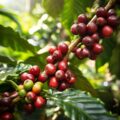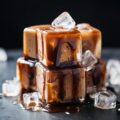What is Upcycled Beauty?
Upcycled beauty is an innovative and eco-friendly approach to skincare and cosmetics that repurposes ingredients that would otherwise go to waste. This sustainable beauty trend transforms byproducts from the food and agriculture industries into effective, natural ingredients for our self-care routines. By giving new life to these materials, upcycled beauty not only reduces waste but also promotes a more circular and compassionate approach to personal care.
The concept of upcycled beauty aligns perfectly with the growing consumer desire for sustainable and ethical products. It’s a way to nurture both our skin and the planet, creating a harmonious balance between self-care and environmental stewardship.
The Environmental Impact of Upcycled Beauty
The beauty industry has long been criticized for its environmental footprint, from excessive packaging to harmful ingredients. Upcycled beauty offers a refreshing alternative that addresses these concerns head-on:
- Waste Reduction: By using ingredients that would otherwise be discarded, upcycled beauty significantly reduces waste in the food and agriculture sectors.
- Lower Carbon Footprint: Repurposing existing materials requires less energy and resources compared to producing new ingredients from scratch.
- Water Conservation: Many upcycled ingredients require minimal additional processing, saving water in the production process.
- Biodiversity Protection: By maximizing the use of existing crops, upcycled beauty reduces the demand for new agricultural land, helping to preserve natural habitats.
Embracing upcycled beauty is a compassionate choice that extends beyond personal care to encompass care for our planet and its ecosystems.
Popular Upcycled Beauty Ingredients
The world of upcycled beauty is filled with surprising and effective ingredients. Here are some popular upcycled materials finding their way into our beauty routines:
- Coffee Grounds: Used as a natural exfoliant and to reduce puffiness.
- Fruit Stones: Apricot and plum stones are ground into gentle exfoliants.
- Grape Seeds: Rich in antioxidants, they’re used in anti-aging products.
- Discarded Fruit Peels: Orange and lemon peels are sources of natural fragrances and vitamin C.
- Leftover Plant Oils: Oils from juice production are repurposed for moisturizing properties.
These ingredients not only provide effective skincare benefits but also tell a story of resourcefulness and respect for nature’s bounty.
DIY Upcycled Beauty Recipes
Embracing upcycled beauty doesn’t mean you need to rely solely on store-bought products. You can start your upcycled beauty journey right in your own kitchen. Here are some simple DIY recipes to try:
Coffee Ground Body Scrub
- 1/2 cup used coffee grounds
- 1/4 cup coconut oil
- 1 tablespoon brown sugar
Mix all ingredients and gently massage onto damp skin in circular motions. Rinse off for soft, exfoliated skin.
Citrus Peel Toner
- Peels from 2-3 oranges or lemons
- 1 cup water
Boil the peels in water for 15 minutes, then strain and cool. Use the liquid as a refreshing, vitamin C-rich toner.
Creating your own upcycled beauty products can be a mindful and enjoyable process, connecting you more deeply with the ingredients you’re using and the earth they come from.
Brands Championing Upcycled Beauty
As the upcycled beauty movement gains momentum, several brands are leading the way with innovative products and practices:
- UpCircle Beauty: Known for their coffee scrubs and face serums made from repurposed ingredients.
- Fruu: Creates lip balms from fruit waste byproducts.
- Circumference: Uses leftover olive leaves from the olive oil industry in their skincare products.
- Lush: Incorporates “safe synthetics” made from waste carbon emissions into their products.
These brands demonstrate that luxury and efficacy can go hand-in-hand with sustainability and compassion. By supporting such companies, consumers can contribute to a more sustainable beauty industry while enjoying high-quality products.
The Future of Upcycled Beauty
The upcycled beauty trend is more than just a passing fad; it represents a fundamental shift in how we approach personal care and sustainability. As consumers become more aware of the environmental impact of their choices, the demand for upcycled beauty products is likely to grow.
Looking ahead, we can expect to see:
- More innovative ingredients being discovered and repurposed for beauty use
- Increased collaboration between the food, agriculture, and beauty industries
- Advanced technologies to make upcycling processes more efficient
- Greater transparency in sourcing and production methods
- A wider range of upcycled beauty products becoming mainstream
The future of beauty is one where waste is minimized, resources are maximized, and every product tells a story of renewal and respect for the earth.
FAQ: Upcycled Beauty
Q1: Is upcycled beauty as effective as traditional beauty products?
A1: Yes, upcycled beauty products can be just as effective as traditional ones. Many upcycled ingredients are rich in nutrients and active compounds that benefit the skin. The efficacy depends on the formulation and quality of ingredients, not whether they’re upcycled or not.
Q2: Are upcycled beauty products safe to use?
A2: Reputable upcycled beauty brands ensure their products meet the same safety standards as traditional beauty products. They undergo rigorous testing and quality control. However, as with any skincare product, it’s always wise to check the ingredients list and do a patch test if you have sensitive skin.
Q3: How can I identify genuine upcycled beauty products?
A3: Look for brands that are transparent about their sourcing and upcycling processes. Many will explicitly state which ingredients are upcycled and where they come from. Certifications from organizations like Upcycled Food Association can also help identify genuine upcycled products.
Q4: Can I create upcycled beauty products at home?
A4: Absolutely! Many kitchen scraps like coffee grounds, fruit peels, and used tea bags can be repurposed into simple beauty treatments. However, be cautious and research proper methods to ensure safety and effectiveness.
Q5: Does upcycled beauty cost more than traditional beauty products?
A5: Prices can vary, but many upcycled beauty products are competitively priced. While some may cost more due to specialized processing, others may be more affordable as the base ingredients are essentially “rescued” waste products. The value also extends beyond price to include environmental benefits.









